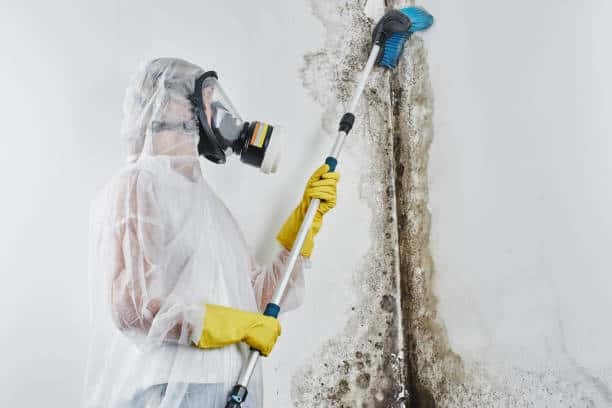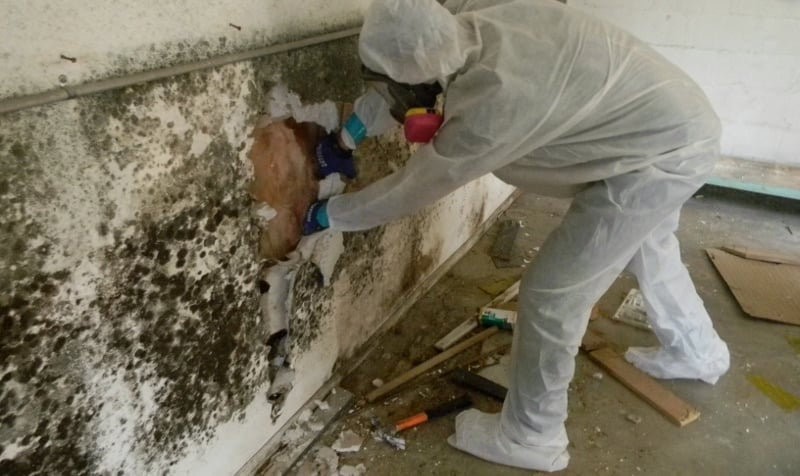Mold Removal in Westchester County

In Westchester County, NY, professional mold cleaning is typically handled by certified mold remediation experts, who follow industry standards and guidelines to ensure thorough, safe, and effective mold removal. The general process of professional mold cleaning in Westchester County involves several key steps:

- Site Inspection: The first step involves a certified mold inspector assessing the property. They inspect visible areas for mold and identify hidden areas where mold may be present (e.g., behind walls, under carpets, in attics, basements, etc.).
- Moisture Detection: Since mold thrives in moisture-rich environments, inspectors use specialized tools like moisture meters, thermal cameras, and hygrometers to measure the moisture levels in building materials.
- Air Quality and Surface Testing: Sometimes, professionals take air samples and surface swabs to determine the type and extent of mold contamination. Testing helps identify potential health risks, especially for sensitive individuals.
2. Containment and Protection
- Isolating the Affected Area: Mold remediation companies will seal off affected areas using plastic sheeting or other barriers to contain the mold. This helps prevent the spread of mold spores to unaffected parts of the building during the cleaning process.
- Negative Air Pressure: To prevent cross-contamination, negative air machines (HEPA air scrubbers) are often used. These machines create negative pressure within the contained space, ensuring mold spores do not escape to other areas of the building.
- Personal Protective Equipment (PPE): The remediation team wears appropriate PPE, such as respirators, gloves, and protective suits, to ensure their safety during the cleaning process.
3. Mold Removal and Cleaning
- Removal of Contaminated Materials: In many cases, moldy materials such as drywall, insulation, carpets, or ceiling tiles need to be removed and properly disposed of. If materials are too heavily infested or cannot be cleaned effectively, they are discarded.
- Cleaning Non-porous Surfaces: For surfaces like tile, wood, glass, and concrete, mold can usually be scrubbed and cleaned. Professionals use specialized cleaning solutions (e.g., mold removers, detergents) and equipment such as scrubbers, sponges, and HEPA vacuums to remove visible mold.
- Antimicrobial Treatment: Once surfaces are cleaned, an antimicrobial solution is often applied to kill any remaining mold spores and prevent future growth. This can include fungicides or biocides specifically formulated for mold control.
- Drying the Area: Dehumidifiers and industrial fans are used to dry out areas that have absorbed moisture. Proper drying is essential to eliminate mold and prevent it from returning.
- Encapsulation: In cases where mold removal from materials is not possible, some surfaces may be encapsulated, which means applying a sealant that traps any remaining spores and prevents further growth.

HEPA Air Scrubbers: To remove airborne mold spores, professionals use HEPA air scrubbers during and after the cleaning process. These devices filter the air to reduce mold spore levels and improve indoor air quality.
Post-Cleaning Air Testing: After the mold has been removed, air quality testing may be conducted to ensure that mold spore levels are safe and within acceptable limits. This is an important step to confirm that the remediation was effective.
5. Final Inspection
Thorough Inspection: Once the cleaning is complete, the remediation team will conduct a final inspection to ensure all mold has been removed and that the space is dry, sanitized, and safe for re-occupancy.
- Quality Assurance: The professional team may also perform a quality assurance check to verify the effectiveness of the cleaning process. If needed, additional steps are taken to ensure the property is mold-free.
6. Prevention and Recommendations
- Addressing the Root Cause: The mold remediation experts will identify and address the underlying cause of the mold, whether it’s a plumbing leak, poor ventilation, or other moisture issues. Fixing the root cause is crucial to preventing future mold problems.
- Humidity Control: Recommendations are often made to control humidity levels in the home or building, such as installing dehumidifiers, repairing leaks, improving ventilation, or using mold-resistant building materials.
- Ongoing Monitoring: Some companies provide ongoing monitoring or maintenance to help ensure that the mold problem does not return.
7. Local Considerations in Westchester County:
- Humidity and Climate: Westchester County, located just north of New York City, has a humid continental climate. The humid summer months and cold winters can create conditions where mold can thrive, especially in poorly ventilated areas like basements or crawl spaces. It’s important to maintain proper humidity levels and address water intrusion to avoid mold growth.
- Building Codes and Regulations: Westchester County and New York State may have specific mold regulations, including local health codes or building codes related to mold remediation. It’s essential for contractors to adhere to these guidelines, and homeowners should check that the remediation professionals are licensed and certified.
Choosing a Mold Remediation Service in Westchester County:
When selecting a mold remediation company in Westchester, ensure they:
- Are licensed and certified (e.g., by the IICRC or NYS DOH).
- Follow industry best practices and local regulations.
- Offer a detailed, transparent assessment and cleaning plan.
- Provide post-remediation testing to verify air quality.
- Offer warranties or guarantees for their work.
Professional mold cleaning ensures thorough remediation, reducing health risks and preventing future mold problems. It’s always important to address mold issues promptly to protect your home and health.
